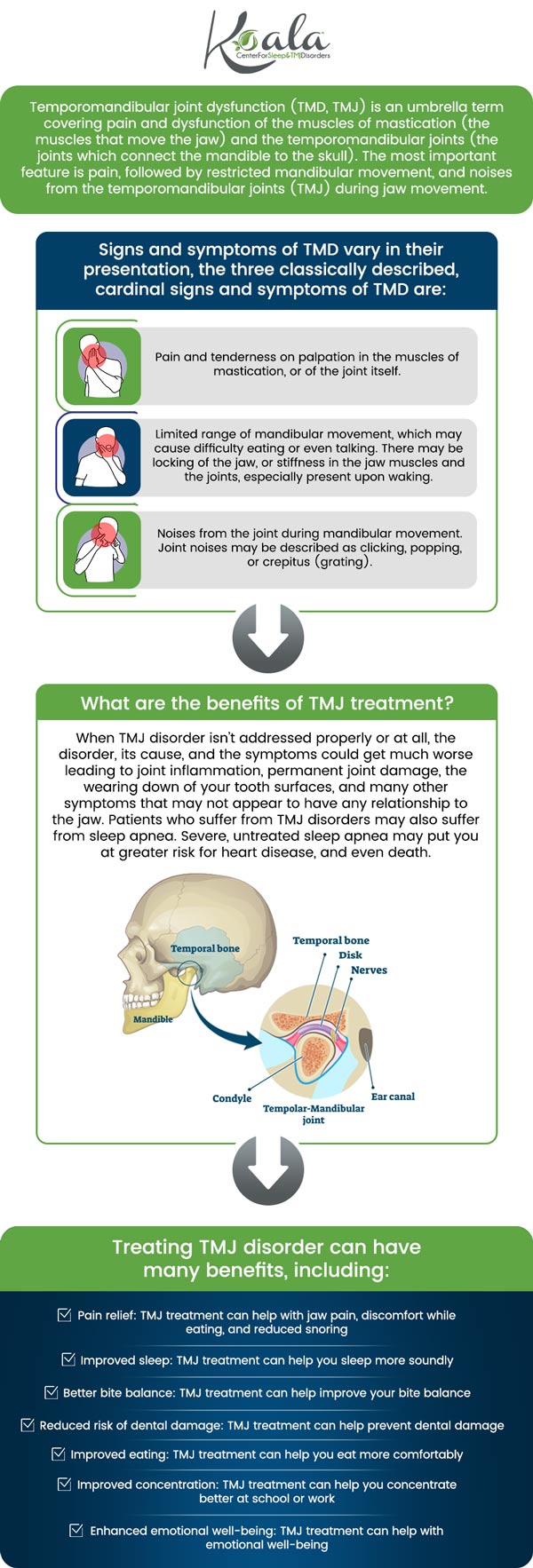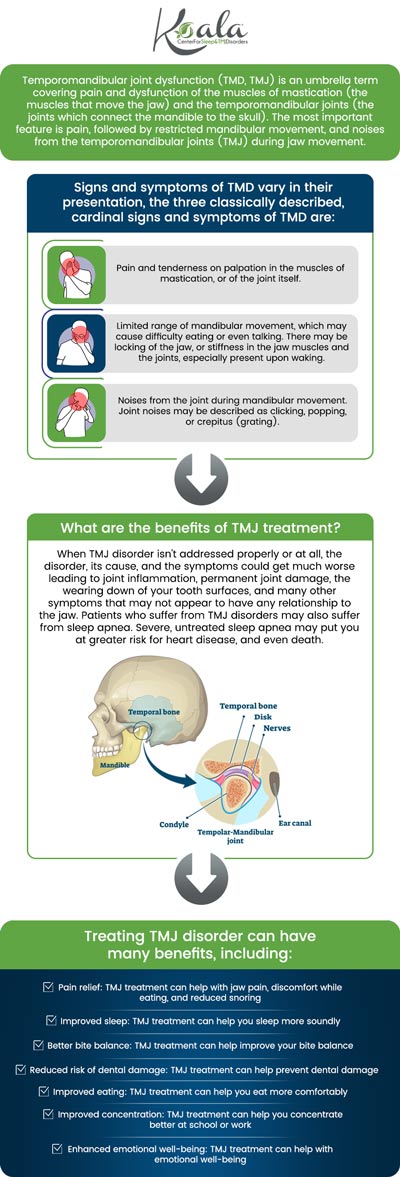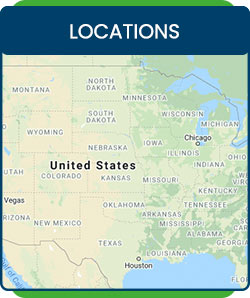How is TMJ Diagnosed?
TMJ Disorders can be treated, so talk to our team of healthcare providers today at Koala® Center For Sleep & TMJ Disorders about TMJ. For more information call us at one of our clinics today or request an appointment online. We serve patients from all over the USA. Locations in Bloomington IL, Peoria/Dunlap IL, El Paso TX and Wausau WI.




Table of Contents:
How do you test for TMJ?
How is TMJ diagnosed and treated?
What does TMJ pain feel like?
TMJ disorders can be treated by a doctor or a dentist, depending on their familiarity and experience with the conditions and possible treatment plans. If you feel like you may be suffering from TMJ disorder, you can reach out to both to see which one has the knowledge to diagnose and treat the condition. Your doctor or dentist will ask you several questions about your symptoms to determine if the source of the issues is related to a TMJ disorder or if it could be the result of another medical issue. They will also want to perform an exam of your jaw to test the movement and observe how much range of motion you have in your jaw. While you open and close your mouth, they will listen for any clicking or grinding sounds and feel for any unnatural shifts or jerky type movements that happen. To help determine the source of the pain, they will gently press on the jaw area as well as surrounding areas to find the areas that are causing pain or discomfort. Once your exam is complete, the doctor or dentist will determine if you need additional testing such as dental x-rays for a closer look at the teeth and jaw, a CT scan to see the bones in the joint through a detailed image or an MRI to show any potential issues in the joint’s disk or the soft tissue surrounding the jaw joint.
TMJ disorders are diagnosed and treated by a doctor or dentist who has experience with this type of condition. There currently isn’t a specialization in dentistry or the medical profession for TMJ disorders, although doctors and dentists can both receive additional training in the temporomandibular joint, the issues associated with it and how to diagnose TMJ disorders. If your doctor or dentist aren’t experienced with TMJ disorders, chances are good they know someone who is and can refer you to them for treatment. TMJ disorders are diagnosed by discussing your symptoms and having an exam completed to observe the movements of the jaw for any sounds it makes or unnatural shifting that happens when you open and close your mouth. Further testing can be done to find the source of the pain, through the use of x-rays, CT scans and MRI’s to pinpoint if the issue is in the jaw bones, teeth, joint cartilage, shock-absorbing disk in the joint or in the soft tissues surrounding the jaw. Various treatments are available for TMJ disorders through medications, therapies or as a last resort, surgery. Before surgery, every other avenue for relief should be explored. Medications that can provide relief include pain relievers and anti-inflammatories, either over the counter or as prescribed by your doctor or dentist, tricyclic antidepressants that can be used for pain relief, and muscle relaxants to help control muscle spasms that cause pain. Therapies that don’t require medication can also provide relief, such as mouth guards or oral splints, physical therapy to strengthen and stretch the jaw muscles and counselling to understand any factors that could be impacting your pain.
TMJ pain can be different for everyone depending on the cause of their particular case of TMJ disorder although there are commonalities in the location and type of pain experienced. Since TMJ disorders originate in the jaw joint, the most common pain is felt in the jaw and can be a mild, dull ache to extreme pain felt on the sides of the face. Pain can be experienced on one or both sides of the head depending on if the issue affects both temporomandibular joints. Some patients may experience pain in front of their ears or within the ear canal, similar to the pain of an ear infection. Migraines and severe headaches are also common with TMJ disorders, with pain felt in the temples or throughout the head. Sufferers can also experience dull, aching pain across their cheeks or full facial pain. If you want treatments for TMJ, then we encourage you to reach out to our team of leading healthcare professionals today at Koala Center For Sleep & TMJ Disorders.

Additional Services You May Need
▸ KoalaKIDZzz®
▸ Sleep Apnea
▸ Snoring
▸ TMJ Disorder
▸ Fatigue
▸ Sleep Disorders
▸ Weight Loss
▸ CPAP Alternative
▸ Oral Appliances




